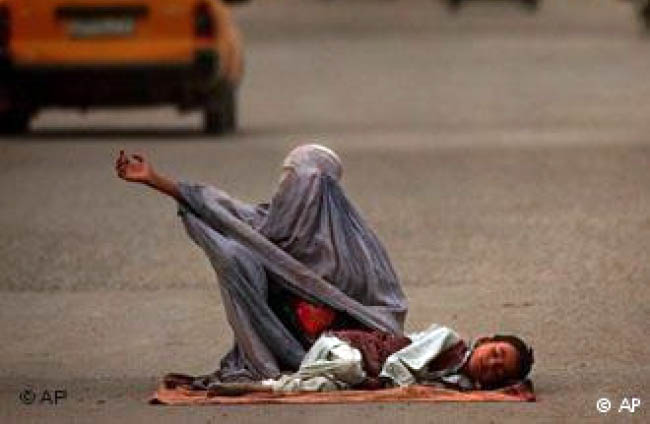In spite of hundreds of aid organizations and humanitarian conventions world wide, the poverty mortality rate is terribly increasing in modern age. Almost half of the world — over 3 billion people — live on less than $2.50 a day. The GDP (Gross Domestic Product) of the 41 Heavily Indebted Poor Countries (567 million people) is less than the wealth of the world’s 7 richest people combined. Nearly a billion people entered the 21st century unable to read a book or sign their names. Less than one percent of what the world spent every year on weapons was enough to put every child into school and yet it did not happen. Nearly 1 billion children live in poverty (1 in 2 children in the world). 640 million live without adequate shelter, 400 million have no access to safe water, and 270 million have no access to health services. Almost 10.6 million children die before they reached the age of 5 (or roughly 29,000 children per day). According to World Bank reports, the number of people living under poverty line is 702 million or about 9.6% of the global population whereas the poverty line defined as living on $1.90 or less a day.
As a pioneer country in terms of poverty crisis, Afghanistan ranked 162th out of 185 poorest countries of the world in 2015 while this year is far worse comparing to the last year. Developmen-wise, Afghanistan is the fifth least developed country in the world. Despite recent minor progress, millions of Afghans still live in severe poverty with limited access to food and other basic requirements. According to WFP, 7.6 million people, roughly one-third of the population, are food-insecure, and a further 14 percent are considered to be borderline food-insecure. But the depth of poverty crisis and economic recession in Afghanistan is beyond cursory reports over a quarter of Afghan children die before their fifth birthday mostly from preventable diseases such as pneumonia and diarrhea. Afghanistan has some of the worst child malnourishment, stunting, underweight and vitamin deficiency figures in the world. According to the World Food Program, 39% of children under the age of five are underweight and 78% of Afghan children lack access to safe water and 1 in 8 Afghan women die in childbirth. People are addicted because they try to block pain, the pain of hunger, sickness, physical and mental trauma, by adductive drugs. Nearly three million addicts in this nation of about 30 million people, including 60,000 children under15, and about 13 percent are women and 7 percent are children. Most of the women are opium addicts desperate to blunt the trauma of endless war. Many are illiterate mothers with unemployed husbands. Most have a little in the way of job skills, and some became addicts while picking opium poppies to earn a living and support their families…these have been happening for years while the politicians are indifferent.
According to the constitution of Afghanistan, the government is responsible to provide job opportunities to citizens to remove poverty and unemployment. But, today one of the most important challenges in the country is unemployment after insecurity. Currently, the people are stuck in challenges and the parents of the families are mostly concerned over joblessness of their children. Unfortunately, most of the university graduates, after receiving their degrees, start looking for a job, but majority of them do not succeed in this regard. Based on statistics, unemployment is the main factor behind increasing crimes in the society. Regretfully, we can see there are hundreds of unemployed people who are waiting for someone to take them for work on the avenues. Most of them even wait until evening, but unfortunately, they go home with empty hands and hungry stomach. However, billions of dollars have poured into Afghanistan, but alas, the number of unemployed people have been increased unprecedentedly.
It was expected to end the crisis with support of international partners, but fifteen years have passed and things have not improved yet. Afghanistan still ranks third in the world in corruption according to Transparency International, which contributes to its extreme poverty. Somewhat, education is available but the quality is awfully poor. The teaching profession is not attractive because of the low pay. Despite minor improvements in the health sector but health indicators are unsatisfactory. Agriculture —the second largest contributor to GDP growth after services—declined by a projected 2 percent in 2015. Growing Conflicts and a lack of economic opportunities have caused young generation to leave the country, leading to both capital flight and brain drain.
Though the international community, led by the United States, has appropriated billions of dollars of aid in one and half decade to reconstruct Afghanistan and rebuild its unbalanced economy, there have been some improvements in GDP growth, life expectancy, poverty reduction, child and maternal health, education, and infrastructure, these improvements are relatively modest in relation to the amount of dollars poured into the country as aid. Moreover, this rate of improvement is too low and slow to rescue from crisis and become self-sufficient.
The primary solution is that the current leaders are unable to end the crises. So, the first important step towards change is to choose the leaders who have proven their commitments and propose specific solutions to fundamental issues of country including security, poverty and illiteracy. As long as our people are undetermined, unaware and do not know who to vote, their leaders will be the same. We should accept that weak nations deserve the weak governments!
Home » Opinion » Poverty: Crisis of Modern-Day
Poverty: Crisis of Modern-Day
| Mohammad Zahir Akbari

